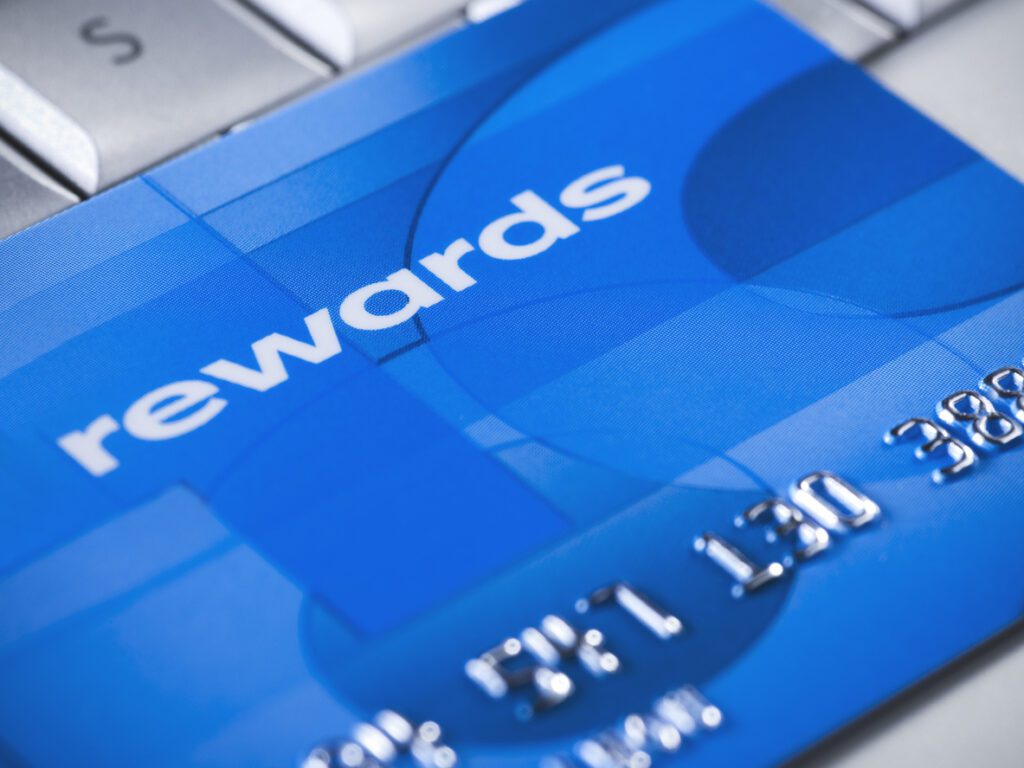
Last Updated on May 5, 2025 by KashKick Crew
Imagine going on your dream vacation without dropping a dime or getting a new wardrobe without pulling out your debit card.
Even better? Imagine doing it just by spending on your everyday purchases.
That’s how credit card rewards actually work! Credit card companies offer rewards like cash back, airline miles, hotel stays, dining and more. All you have to do to rack ‘em up is swipe your card.
From lounging in luxury without loosening your purse strings to snagging haute couture at zero cost, credit card rewards can feel like magic. Follow these tips to swipe smart, maximize those perks and keep your finances from falling into chaos as your rewards grow.

Understanding Credit Card Rewards
To get the most out of your everyday spending, you’ll have to know your options for credit card rewards. Rewards cards offer tons of options, so pick the card (or cards) that’ll help you rack up rewards toward the things you want to spend money on.
Here are the most common types of credit card rewards:
- Cash back: With a cash-back card, you’ll earn cash as a percentage of what you spend. You can put cash toward paying off your card balance or claim cash as a check or direct deposit.
- Points: Points-based cards let you earn points as you spend. Points usually have a cash-out value, but the value is often higher if you exchange them for gift cards, merchandise, travel or other services from partners of the credit card company.
- Miles: Airline credit cards usually dole out rewards as “miles,” which are similar to points. You can usually only cash out miles for travel: flights, hotels, restaurants and rental cars.
- Tiered rewards: Some cards offer a different percentage of rewards depending on what you purchase. A card might offer 3% on purchases for travel and dining, but 1% on everything else, for example. You can usually find cards for any lifestyle: travel, dining, groceries, gas, etc.
- Rotating categories: Cards with tiered rewards might change those tiers by offering higher rates on a different category from quarter to quarter.
- Sign-up bonuses: Many credit cards come with an incentive for new customers. If you spend a certain amount within the first few months of opening the card, you can earn a cash bonus or extra points or miles.
- Perks and benefits: Some credit cards offer additional perks such as access to airport lounges, travel insurance, extended purchase warranties with partner brands and more.
With all of these options, you can turn your spending into just about any rewards you want — you just have to choose the right card.
Choosing the Right Credit Card for You
Getting the most out of a rewards credit card requires getting a card that rewards the kind of spending you already do and offers the kinds of gifts you want to save money on.
To choose the best cards for you:
- Notice your spending habits: Look at where you already spend money. Does most of your day-to-day spending go toward gas? Groceries? Eating out? Travel? Electronics? Pick a card (or multiple cards) that offers the most rewards for the kinds of spending you do most.
- Compare cash-options: Credit card rewards are only useful if you use them! So pick a card that offers discounts on things you already buy or things you’d like to buy more of.
- Read the fine print: Consider more than just rewards when you choose a card. Many rewards cards come with an annual fee, so you’ll need to earn more in rewards than you pay in fees to make it worth it. Credit cards also come with interest rates, credit limits and credit score requirements you can compare to determine which is right for you.
To compare rewards credit cards side-by-side, check out these credit card comparison sites:
- Nerd Wallet
- CardMatch by Bankrate
- LendingTree

Rewards Credit Card Pitfalls to Avoid
Credit card rewards are an exciting feature many people use to save money and get free things. But they’re ultimately designed to encourage you to spend money and accumulate debt.
Avoid these common pitfalls to make sure you get more out of the card than you give away to credit card companies.
Overspending to Rack up Points
Credit card rewards don’t necessarily save you money if you end up spending more than you normally would just to earn points!
It’s tempting to spend extra money in a category or at a particular store, for example, if a card is offering high rewards for those purchases. But that’s not exactly “free money” if you’re buying stuff you wouldn’t otherwise have bought.
Plan your credit card use based on your normal spending habits, not the other way around. Use rewards credit cards strategically on your everyday purchases, and take advantage of rewards that roll in naturally.
Accumulating Debt, Interest and Fees
You don’t have to rack up debt to rack up rewards on your credit cards. You’ll avoid paying interest and late fees if you pay off your balance in full each month, and you’ll still earn rewards.
A high credit card balance is also harder on your credit score. Running a balance (”utilization”) of more than 30% of your total credit limit can hurt your score. You can avoid that by paying off your balance as you make purchases, even if you have to do that more than once a month when you get a credit card bill.
Carrying debt hurts your credit score even more. In addition to the extra costs and the high utilization, if you carry debt and don’t make at least minimum monthly payments, your credit score will take a serious dive.
Rewards Red Tape
Rewards categories and percentages can change over time. Keep up-to-date with changes so you know you’re still getting the best bang for your buck.
Keep an eye out, in particular, for extra requirements to claim rotating rewards. You might have to “activate” rewards categories as they change every few months, or you’ll miss out on the higher rewards.
Check your credit card account regularly, and read emails from your credit card issuer to make sure you’re on top of any changes or extra requirements in your card’s terms and rewards programs.
Be a Credit Card Rewards High Roller
Once you’re familiar with your spending habits and the parameters of your credit card rewards, crank up the volume to get even more out of your rewards.
Card Churning
Get your hands on every credit card bonus out there! “Churning” is the practice of opening new credit cards, claiming introductory bonuses and discontinuing your use of the card.
Doing this haphazardly could risk accumulating debt or hurting your credit score, so do your research before trying it out.
- Spread out applications. Applying for too much new credit in a short amount of time dings your credit score.
- Keep an eye out for annual fees. To avoid losing your benefits to an annual fee, close the card before you have to pay it. But…
- Don’t close every card right away! Length of credit history impacts your credit score, so a bunch of cards only open for a few months could be detrimental. If there’s no annual fee, keep a card open even after you stop spending on it.
- Watch your spending. Introductory offers often come with high spending requirements for the first few months of your account. If this is way above your normal spending, the card probably isn’t a fit for you!
Also note that credit card issuers have implemented various measures to prevent churning, so this strategy is becoming more challenging.
Points Transferring
Rewards points are often more valuable when you transfer and redeem them with partner brands than if you just take them as cash or statement credit.
Transfer options are usually concentrated among travel brands, such as airlines and hotels. This strategy is particularly beneficial for frequent travelers. You can align your point usage with your travel plans to optimize the value of your rewards.
Combining Cards
You don’t have to limit yourself to a single rewards credit card!
Using multiple credit cards strategically can help you get the most out of every purchase. Different cards probably offer different rewards for the kinds of purchases you make — like groceries, dining or travel. By using the card that offers the highest reward on whatever you’re buying, you can gather the most possible rewards.
Investing Your Cash Rewards
If you’re not counting on spending the cash back you earn from a rewards credit card, why not invest it to benefit even more? Investing cash back is a way to grow your savings without dipping into your own resources.
Getting started investing can be intimidating, but it doesn’t have to be difficult. It doesn’t even have to cost a lot of money to get started.
With investing apps like Acorns, Public, Robinhood and more, you can start investing with just a few dollars at a time. These apps offer the perfect opportunity to turn your cash back rewards into growing long-term wealth!
